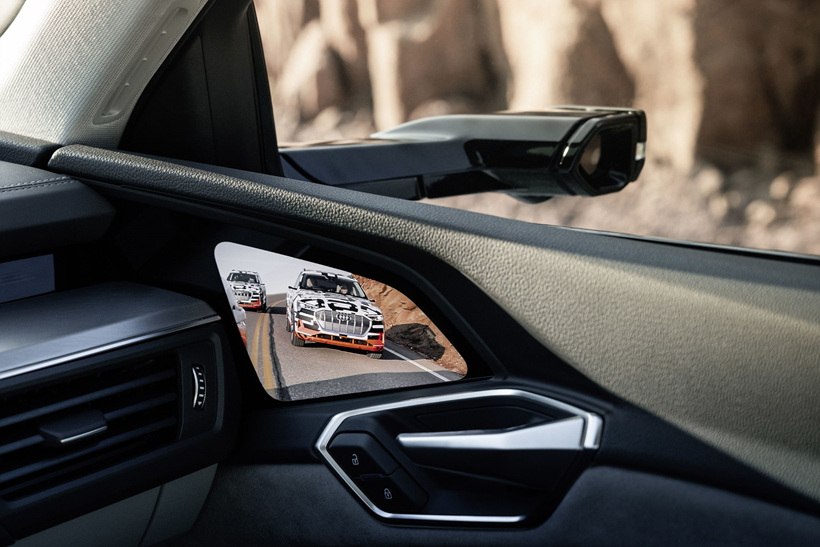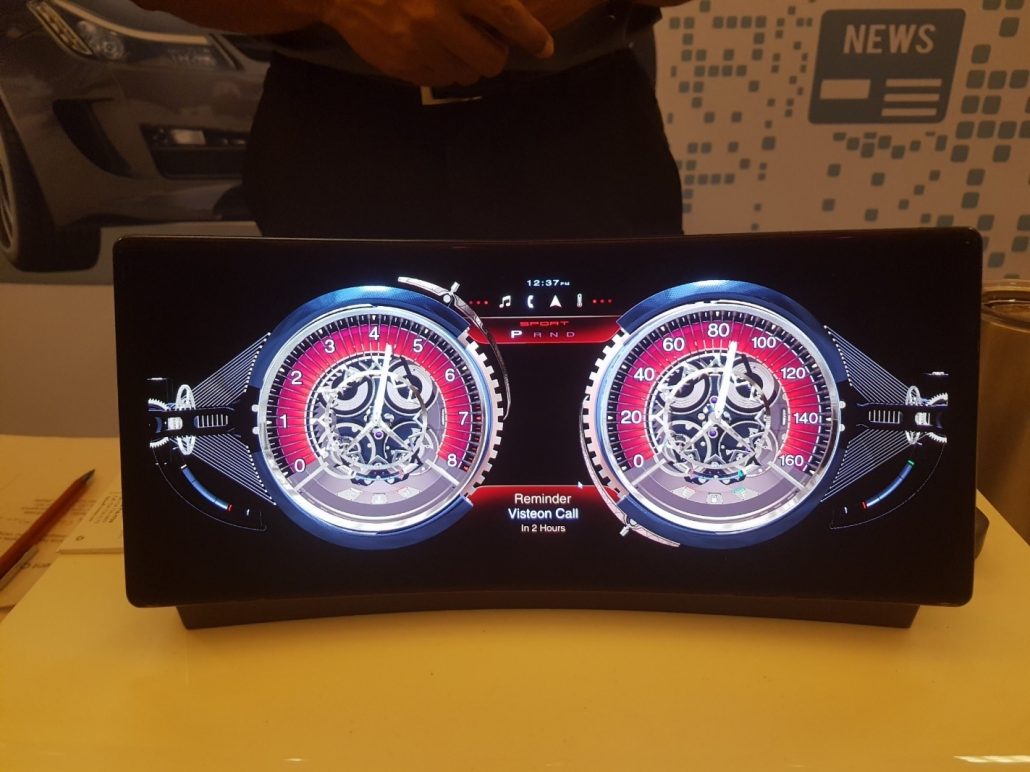The golden market for Automotive OLED Displays is approaching.
The display of connected cars is getting bigger and bigger to for the convenience of providing various information. The displays used in general vehicles include the cluster, CID (center information display), RSE (rear seat entertainment), and RMD (room mirror display). In connected cars, various buttons of the center fascia are displayed, and a display is attached to the door using a camera instead of a side mirror. The Audi e-tron®, all-new electric Sports Utility Vehicle (SUV) feature a small side-view OLED display instead of the existing side mirrors. According to Choong-Hoon Yi, CEO of UBI Research, the reason why automobile manufacturers are actively trying to use OLED displays is because OLED can be a good resolution in various aspects such as design, visibility and thickness. Since the side view camera is attached to the door, the viewing angle should be very good for the driver’s eyes. Especially in nighttime driving, black should be accurately represented on the display to make things clearer. In addition, OLEDs with fast response must be used for the mirror of car because the screen needs to be changed rapidly depending on speed of the car (if it is running at a high speed). In winter season when temperatures are low, LCDs with slow response times are not recommendable to be used.
Flexible OLEDs should also be used to mount the cockpit display on the dashboard that maximizes driver’s convenience.


<BenzのF015 cockpit displayとAudiのe-tron side view display>
In contrast, LG Display, the strongest player in the market for OLED TVs, is looking for the display market for clusters and CIDs as flexible OLED with two layers of RGB OLED. Visteon, the second-largest supplier of automotive displays, is preparing for the cluster market with LG Display’s pOLED. Since 12.3-inch p OLED is made of LTPS substrate and its OLED process is more complicated than that of OLED for smartphone, panel prices including module are expected to be equal to 55-inch WRGB OLED, which can create a premium market even if the quantity is small.

<Visteon, 12.3 inches pOLED>
According to “Automotive OLED Display Report” published by UBI Research, the market for automotive OLED displays led by Samsung Display and LG Display is expected to grow to US$ 540million in 2023.



